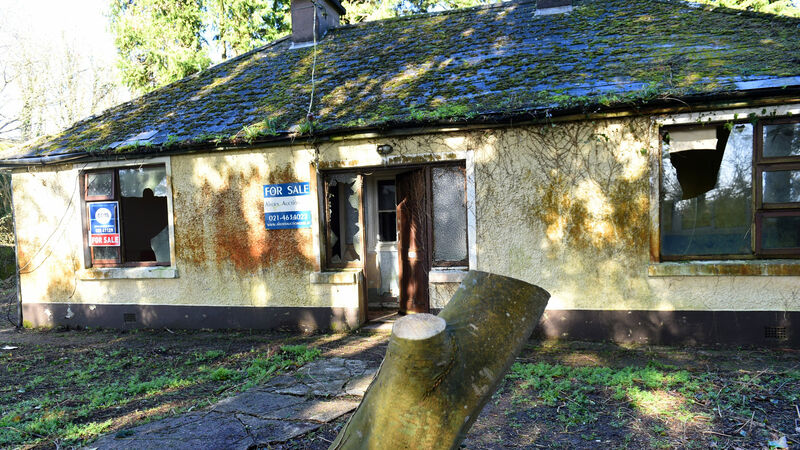More than 90,000 dwellings in Ireland were vacant last year

'The 90,158 vacant residential properties and the 22,096 derelict residential properties across Ireland should be investigated to ascertain if they can be returned to the housing stock,' Annette Hughes, director of EY Economic Advisory, said. File picture: Larry Cummins
The number of vacant dwellings in Ireland stood at 90,158 last year, a new report has said.
The Residential Buildings Report for the fourth quarter of 2021 will be published on Tuesday by GeoDirectory, and prepared by EY.
The number of vacant properties in Q4 of 2021 represented 4.4% of the national housing stock, a marginal decrease on last year.
The counties with the highest rates of vacant properties were Leitrim (13.3%), Mayo (11.9%) and Roscommon (11.6%). Dublin had the lowest vacancy rate with 1.4%, followed by Kildare (2.1%), Waterford and Louth (both 2.8%).
Furthermore, there were 22,096 residences classed as derelict in 2021, although this has fallen 7.3% since December 2016.
Annette Hughes, director of EY Economic Advisory, said: “Based on our analysis for this report, the 90,158 vacant residential properties and the 22,096 derelict residential properties across Ireland should be investigated to ascertain if they can be returned to the housing stock, a move which would also support our retrofitting targets.”
The number of new residential address points added to the GeoDirectory database in 2021 fell by 17.4% compared to the previous year, meaning fewer builds were being completed.
Almost three-in-10 (29.6%) of the new addresses registered were in Dublin. Overall, 48.9% of the new addresses recorded were found in Dublin, Meath, Kildare and Wicklow.
The construction sector, on the other hand, has “rallied strongly” in the second half of 2021 according to the report.
In Q4 of 2021, 19,495 residential buildings were under construction, which is an increase of 16.5% on the figure from the same period in 2020.
An increase in residential construction was recorded in 18 counties, which high increases in Waterford (+70.2%) and Clare (+54.3%).
The number of residential property transactions also increased by 18.8% in the 12 months to October 2021, with the average property price rising in every single county.
The average national house price during the 12-month period to October 2021 was €321,596.
Ms Hughes added: “The level of housing supply coming onto the market in 2021 was well short of what was needed to meet demand.
“While the data around residential construction activity in the latter half of 2021 is extremely encouraging, there is still exceptionally high levels of demand in the housing market. This is evident from the significant increase in the average house price, up 9.4% nationally, with price increases recorded in every county.”
The release of the figures comes ahead of an Oireachtas Housing Committee meeting on the subject of urban regeneration. In their opening statement, the representatives of the School of Transport Engineering, Environment & Planning at TU Dublin will say that the "current system (whether funding, recruitment, design, or implementation) is generally not set up to react quickly enough to deal with the large-scale and transformative changes required over the next five years, and beyond".
However, they will point to the example of Blackrock village in Dublin, which was overhauled due to Covid.
"With Covid, the local business and community network worked with the council to reimagine Blackrock Main St, and provide for social distancing. Footpaths were expanded, a lane of traffic removed, some cycling facilities provided, along with thoughtful planting and seating. The result was more people, less cars and a clear endorsement from business and the community."
The Cork Cycling Campaign will tell the committee that areas in Ireland need "to be healthy and attractive places to live".










